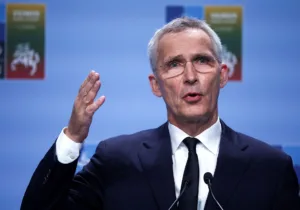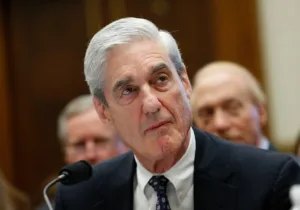When President Trump tapped Lt. Gen. H.R. McMaster last week to serve as his (second) national security advisor, he touched off a now-familiar chorus of warnings and worries. There are plenty of reasons to criticize Trump (as this writer and this publication have pointed out early and often), but his appointment of generals to serve in key posts—during a time of war—is not one of them.
McMaster replaces Lt. Gen. Michael Flynn, who resigned after it was revealed he had misled Vice President Pence. In replacing Flynn, McMaster joins former generals James Mattis (secretary of defense), John Kelly (secretary of homeland security) and Keith Kellogg (chief of staff for the National Security Council) in the Trump administration. In addition, Mike Pompeo, a West Point grad and former Army captain, is Trump’s CIA director; and former Navy SEAL commander Ryan Zinke is interior secretary.
Before getting into the overreaction from the press and some policymakers about Trump’s affinity for generals, a word about Flynn’ resignation: Whether he withheld information from Pence or misled him, Flynn’s actions made it impossible for the former general to continue as national security advisor. Looking at the bright side, perhaps the president’s second choice in this case will turn out as well as President Reagan’s second choice for secretary of state (George Shultz replaced the seemingly-unhinged Al Haig), or President Bush 41’s second choice for defense secretary (Dick Cheney replaced John Tower, who was rejected by the Senate), or President Clinton’s second chief of staff (Leon Panetta replaced the badly-miscast Mack McLarty), or President Bush 43’s second choice for an open Supreme Court seat (the highly-qualified Samuel Alito replaced the under-qualified Harriet Miers after she withdrew from the nomination process). We should hope and pray for the best.
Turning back to the near-hysteria about Trump’s appointment of generals, former Defense Secretary Chuck Hagel worries that having Mattis as the top man at the Pentagon could “undermine the role of the Joint Chiefs of Staff.” Sen. Chris Murphy says, “I’m concerned…What we’ve learned over the past 15 years is that when we view problems in the world through a military lens, we make big mistakes.” Daniel Benjamin, a former counterterrorism official in the Obama administration, warns, “Generals as a rule believe in hierarchies and taking orders, and if the president gives them an order you have to wonder how likely they are to push back against it.”
Sen. Kirsten Gillibrand opposed a congressional waiver allowing Mattis to become secretary of defense because “[c]ivilian control of our military is a fundamental principle of American democracy, and I will not vote for an exception to this rule.”
But by far the most over-the-top criticism came from Sen. Tammy Duckworth, an Iraq War veteran who called Trump’s appointments a “real danger.” She even used the phrase “military junta” in voicing her concerns.
These comments make the reaction to Trump’s appointment of McMaster sound tame by comparison. Calling Mattis, Kelly, and McMaster “a powerful troika”—interesting word choice—the pages of the New York Times have taken pains to point out Trump’s “reliance on high-ranking military officers.” Sen. Jack Reed adds, “There are weighty questions about senior active-duty officers and non-military service that deserve careful consideration.”
Necessary
The kneejerk opposition to former (or current) generals serving in the administration is not surprising. As Americans, we know that civilian control over the military is one of the foundation stones of our republic. We wouldn’t have a republic without civilian control of the armed forces and the rest of the federal government. But a little perspective is in order. There is a civilian in charge of the federal government. His name is Donald Trump, and he never served in the military, which continues a recent trend: Only one of the four presidents elected between 1992 and 2016 served in the military (Bush 43).
Notwithstanding the hysterics about Trump’s cabinet, it pays to recall that President Truman appointed Gen. George Marshall to lead the State Department and the Defense Department. Reagan selected Gen. Colin Powell to serve as national security advisor, and Reagan selected Haig (a four-star general and former NATO commander) to serve as secretary of state. Bush 41 recruited Lt. Gen. Brent Scowcroft to serve as his national security advisor. Bush 43 appointed Powell to lead the State Department. And President Obama appointed Gen. David Petraeus to lead the CIA. Moreover, 11 of America’s presidents—including the father of our country—were generals before they served as chief executive.
In short, Trump’s decision to turn to, and lean on, generals is nothing new. Americans have been doing that since the founding of the country.
As people of faith, we know that the soldier is essential to maintaining some semblance of order in a world bent on chaos and destruction. It pays to recall that Jesus had sterner words for scholars and scribes than He did for soldiers. In fact, when a centurion asked Him to heal an ailing servant, Jesus didn’t admonish the military commander to put down his sword. Instead, He commended him. As soldier-turned-author Ralph Peters reminds us, “Throughout both testaments, we encounter violent actors and soldiers. They face timeless moral dilemmas. Interestingly, their social validity is not questioned even in the Gospels…The thrust of the texts is to improve rather than abolish the soldiery. It is assumed that soldiers are, however regrettably, necessary.”
A Time of War
Whatever one’s view of the Trump administration, there are benefits to sprinkling the cabinet with military veterans.
First, confidence in our elective institutions is at its lowest point ever, while confidence in the military is the highest of any institution in America. Gallup polling reveals that 72 percent of Americans have high confidence in the military, while only 33 percent express confidence in the presidency and just 8 percent express confidence in Congress. Given those numbers, it stands to reason that turning to successful former general officers could help Americans regain confidence in their government.
Second, this is a unique period in American history: Given that America’s military has been engaged in ongoing kinetic operations for more than 15 years—with no clear end in sight—it seems reasonable to have former military men in charge of agencies that deal with national defense, homeland security, and intelligence operations.
These men have proven they can execute missions, manage large systems, and navigate the diverse political-diplomatic-international-interpersonal terrain a modern general must traverse. Plus, they have seen and borne the cost of battle. Kelly’s son was killed in combat in Afghanistan. Kelly deployed on lengthy tours to Iraq. Mattis led the assault into Kuwait during Operation Desert Storm, liberated Kandahar during Operation Enduring Freedom, commanded the 1st Marine Division during Operation Iraqi Freedom, and guided the Marines in Fallujah. McMaster led what is considered a textbook battle in Operation Desert Storm; after 9/11 he served in Operation Enduring Freedom and Operation Iraqi Freedom. Far from sending in the cavalry wherever and whenever the president sees a problem, they will serve as a calming and steadying influence on the new commander-in-chief—something we should welcome given Trump’s demeanor.
Those who warn about former generals not “pushing back against” the president’s orders and/or preferring military options over other alternatives have watched too many movies and read too little history. Consider:
- Douglas MacArthur counseled, “Never get involved in a land war in Asia.”
- Powell urged restraint during the Gulf War, warned Clinton not to send troops into the Balkans, and sounded the loudest warning before the Iraq War.
- Gen. Michael Short traveled to Belgrade to plead with Slobodan Milosevic to change course and avoid war, warning the Serbian strongman, “Nothing here will ever be the same, if we do this.”
- Gen. Eric Shinseki urged the Bush administration in 2002 to deploy “several hundred thousand soldiers” to ensure a decisive victory in Iraq and to provide for postwar stability.
- McMaster wrote a book about the need for generals to push back against the preconceptions and inertia that can set in during military conflict.
On the other hand, it was the politicians who ignored MacArthur’s counsel in Vietnam. It was politicians like Dean Acheson who thoughtlessly and haphazardly declared where America’s security interests ended in Asia, thus giving a green light to the communist bloc in Korea. It was politicians like President Johnson and President Nixon who chose incrementalism and bombing pauses in Vietnam, while American troops were chewed up by the thousands. It was politicians like Madeleine Albright who glibly asked Powell, “What’s the point of having this superb military you’re always talking about if we can’t use it?”
In short, America’s generals are not to blame for America’s wars.
Third, each of the general officers Trump has recruited into the administration signals a welcome break from some of Obama’s most worrisome national-security positions.
Obama made an unenforceable deal with an untrustworthy Iran. Mattis takes a clear-eyed view of Iran, calling it “the single most enduring threat to stability and peace in the Middle East…a revolutionary cause devoted to mayhem.” He warns that the nuclear deal only delayed the day of reckoning: “What we achieved was a nuclear pause, not a nuclear halt. We’re going to have to plan for the worst.”
Obama pulled U.S. stabilization forces out of Iraq, gambling with the hard-earned gains of the surge. Mattis reported that “senior military officers…explained that the successes we’d achieved by 2010-2011 were—and this is a quote—’reversible,’ that the democratic processes and the military capability were too nascent to pull everyone out at one time.”
Obama shifted tactics from counterinsurgency operations (which relied on U.S. personnel on the ground to engage the enemy and build relationships with civilians) to drone strikes (which relied on unmanned combat aerial vehicles to conduct remote-control war). As Leon Panetta, who served as CIA director and defense secretary during the Obama administration, observed, drones are “the only game in town in terms of confronting or trying to disrupt the al Qaeda leadership.” Thus, America came to be seen as detached and remote in every sense of the word. McMaster in 2013 warned, “Wars like those in Afghanistan and Iraq cannot be waged remotely.”
Obama ordered the closure of the Guantanamo Bay terrorist detention facility. Kelly opposed the plan, defended the need for such a facility, and warned about the many threats encroaching on the Western Hemisphere.
While the Obama administration tried to “reset” relations with Moscow, Kelly told Congress that Russia “has pursued an increased presence in Latin America through propaganda, military arms, and equipment sales” and has tried “to gain access to air bases and ports for resupply of Russian naval assets and strategic bombers operating in the Western Hemisphere.”
While the Obama administration expunged the phrase “war on terror” from the federal government’s vocabulary, declared al Qaeda “on the path to defeat,” called ISIS a “JV team,” and said it was time “to turn the page” on years of war, Kelly bluntly countered, “We are at war…Our country today is in a life and death struggle against an evil enemy.”
After focusing on “nation-building at home” and rolling the dice on the bipartisan gamble known as sequestration, neither the White House nor Congress governed as if America was at war in recent years. If the generals can remind the politicians of that truth, they will have done another great service to our nation.
—
Alan Dowd is a contributor to Providence and a senior fellow with the Sagamore Institute Center for America’s Purpose.
Photo Credit: President Donald J. Trump swears in Jim Mattis as the 26th secretary of defense during a ceremony in the Hall of Heroes at the Pentagon, Jan. 27, 2017. DoD photo by Air Force Staff Sgt. Jette Carr.







 Live in the DC area? Sign-up for Providence's in-person events list!
Live in the DC area? Sign-up for Providence's in-person events list!